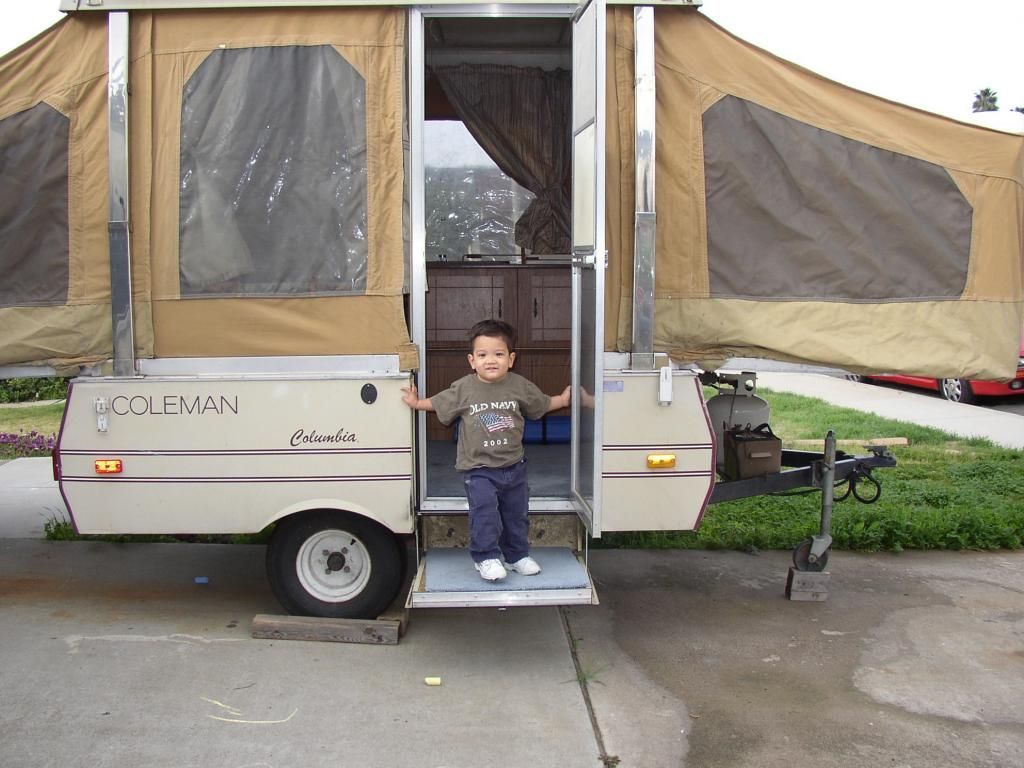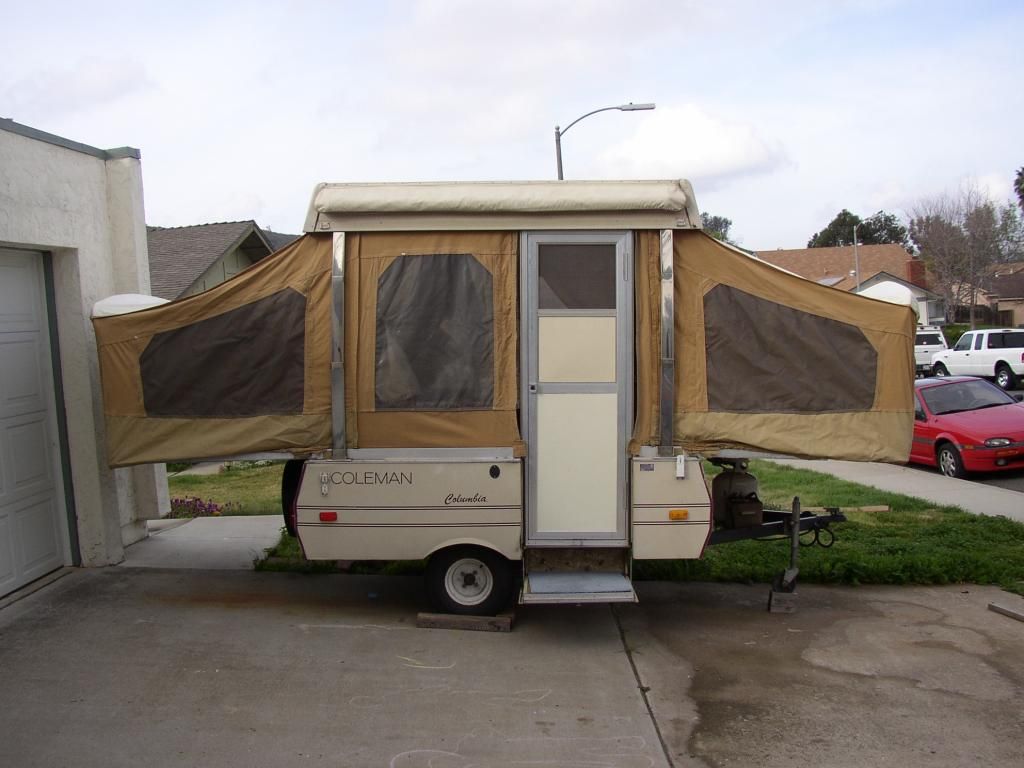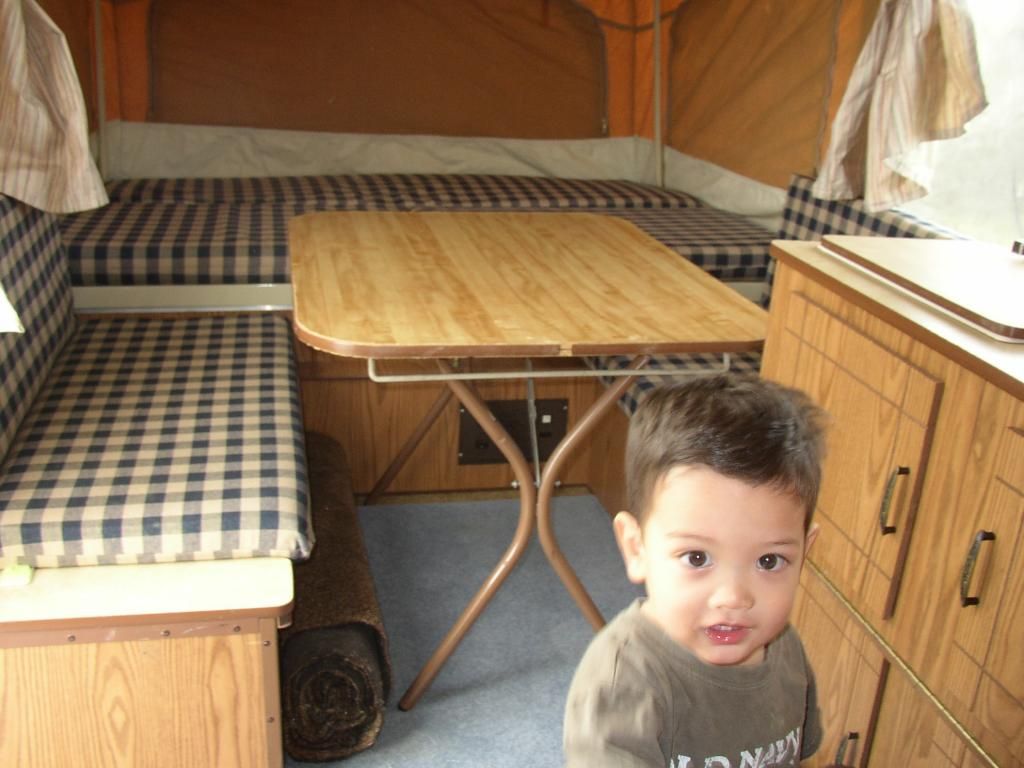- Good Sam Community
- Groups
- RV Newbies
- Forum
- Re: newbie,want to buy a old popup trailer,is it s...
- Subscribe to RSS Feed
- Mark Topic as New
- Mark Topic as Read
- Float this Topic for Current User
- Bookmark
- Subscribe
- Mute
- Printer Friendly Page
newbie,want to buy a old popup trailer,is it safe?
- Mark as New
- Bookmark
- Subscribe
- Mute
- Subscribe to RSS Feed
- Permalink
- Report Inappropriate Content
Oct-03-2014 03:19 AM
I am a newbie,want to save money in hotel and restaurant, live in LA, 2 adult 2 kids (7month and 3 year)and want to visit some national park or forest,such as yosemite,yellowstone or Grand Canyon,and I have a honda pilot 2013,can tow max 2000lbs.
so I want to choose a old popup trailer,such as 1984,1976 joyco or Palmino,depend on my family, is it good for new camping? is it safe?what thing is most important that need to check when I go to see a old popup trailer?
thanks a lot!
vincent
- Mark as New
- Bookmark
- Subscribe
- Mute
- Subscribe to RSS Feed
- Permalink
- Report Inappropriate Content
Oct-08-2014 10:28 AM
Https://www.facebook.com/campingwithyourkidsPA[
url=https://www.facebook.com/campingwithyourkidsPA]https://www.facebook.com/campingwithyourkidsPA
https://www.facebook.com/campingwithyourkidsPA
Tow vehicle: 2003 GMC K1500 ext lb
Previous: 14 years of 3 popups and a hybrid tt
- Mark as New
- Bookmark
- Subscribe
- Mute
- Subscribe to RSS Feed
- Permalink
- Report Inappropriate Content
Oct-08-2014 05:54 AM
I would automatically inspect and regrease them before using it.
Many years ago I had an old pop-up that I bought and converted it to carrying our eight kids bikes. While we were on the highway one of the wheels came flying off. Need I say more!
Jack L
- Mark as New
- Bookmark
- Subscribe
- Mute
- Subscribe to RSS Feed
- Permalink
- Report Inappropriate Content
Oct-07-2014 05:53 PM
1986 Coleman Columbia popup. It has two full size beds and the table folds down into a third bed. You could put both children in one bed and the parents in the other. Or one parent in each bed with one kid each.
Trailer has an 8 foot box and weight 950lbs dry. It has one battery, one propane tank, a 2 burner stove, and a 5 gallon water jug for the sink. In all truth though I never use the stove or the sink, I use the trailer as a rolling tent.
It has NO heater and NO bathroom.



2001 Suburban 4x4. 6.0L, 4.10 3/4 ton **** 2005 Jayco Jay Flight 27BH **** 1986 Coleman Columbia Popup
- Mark as New
- Bookmark
- Subscribe
- Mute
- Subscribe to RSS Feed
- Permalink
- Report Inappropriate Content
Oct-07-2014 11:35 AM
- Mark as New
- Bookmark
- Subscribe
- Mute
- Subscribe to RSS Feed
- Permalink
- Report Inappropriate Content
Oct-07-2014 09:39 AM
- Mark as New
- Bookmark
- Subscribe
- Mute
- Subscribe to RSS Feed
- Permalink
- Report Inappropriate Content
Oct-05-2014 06:09 AM
Ken
2023 Cougar 22MLS, toted with a 2022, F150, 3.5L EcoBoost, Crewcab, Max Tow, FORMER Full Time RVer. Travel with a standard schnauzer and a Timneh African Gray parrot
- Mark as New
- Bookmark
- Subscribe
- Mute
- Subscribe to RSS Feed
- Permalink
- Report Inappropriate Content
Oct-04-2014 10:12 PM
Of second importance is canvas damage from mice and mildew (putting it away wet).
Canvas replacements are available, but you're looking at $700-$1300 depending on the unit. Factor that into the price if the one you're looking at needs it, you might get a good deal on a fixer-upper that's solid other than canvas. The canvas is very easy to replace yourself.
Some campgrounds with bear problems may not allow popups, or will make you store your food in a bear box (provided). I liked our popup, I'm just getting too old to go through the setup process and crank the think up and down several times. Once partway up to load it, another at camp, another at home to unload and let it dry out.
- Mark as New
- Bookmark
- Subscribe
- Mute
- Subscribe to RSS Feed
- Permalink
- Report Inappropriate Content
Oct-04-2014 06:43 PM
2013 Thor Chateau 31L
- Mark as New
- Bookmark
- Subscribe
- Mute
- Subscribe to RSS Feed
- Permalink
- Report Inappropriate Content
Oct-03-2014 09:56 PM
Safe? Safe to tow, in good condition. As safe as a tent for sleeping, if you follow tent safety protocol, no fires inside. No safer than typical low cost family tents with respect to severe weather, i.e. I would be running for shelter in thunderstorms.
Condition is what is most important. You want to find a sound box and bunk ends, well kept chassis, good wheels, bearings, brakes, recent vintage tires, no cracks or breakes in the frame. Wiring, electrical equipment, plumbing (water, and especially LPG) plumbing has to be checked for function, absence of leaks.
To use it, you'll need a tent in good conditon, including screens and zippers, which tend to 'age' faster than the tent material. My tent experience goes back 40+ years, the canvas era, so I look for tears, mildew damage, condition of waterproofing. I'm not familiar with aging of vinyl or vinyl-coated tents, which start to show up in age range you are looking at, but I think I would be wary of any cracking.
Folding, rather than popup, tent trailers tend to be much lighter. Livin Lite still makes them, but the are fairly expensive. I don't know who might have been making them 20-30-40 years ago, I remember them from catalog stores 55-60 years ago, as well as DIY projects. The category is much older than popups, I've seen tent trailer designs from the 1920s and 30s.
I think 2000 pounds is probably a good target weight for towing with a Pilot, but I thought the maximum tow rating, certainly 2008 and earlier, was more like 3500. Maybe Honda lowered in later years?
Itasca Spirit 29B
- Mark as New
- Bookmark
- Subscribe
- Mute
- Subscribe to RSS Feed
- Permalink
- Report Inappropriate Content
Oct-03-2014 06:38 PM
- Mark as New
- Bookmark
- Subscribe
- Mute
- Subscribe to RSS Feed
- Permalink
- Report Inappropriate Content
Oct-03-2014 02:51 PM
- Mark as New
- Bookmark
- Subscribe
- Mute
- Subscribe to RSS Feed
- Permalink
- Report Inappropriate Content
Oct-03-2014 01:18 PM
And as was said, what's in the Pilot can lower that 2000 number.
I suggest you visit the Folding Camper section here and questions from other popup owners.
Or go to Popup Explorer's website and get answers from the best popup website on the Net.
- Mark as New
- Bookmark
- Subscribe
- Mute
- Subscribe to RSS Feed
- Permalink
- Report Inappropriate Content
Oct-03-2014 10:05 AM
2013 Forest River 3001W Windjammer
Equilizer Hitch
Honda EU2000
"I have this plan to live forever; so far my plan is working"
- Mark as New
- Bookmark
- Subscribe
- Mute
- Subscribe to RSS Feed
- Permalink
- Report Inappropriate Content
Oct-03-2014 06:10 AM
2. Spend as much time as it takes to find that "lightly used" unit that was stored indoors.
3. You apparently live in CA, so I assume these will be relatively shorter trips. So you won't need to load up a lot of extra cloths and food. Try to travel light.
4. Your two children are still very young. I would be reluctant to go the tent route. I always said it was a bigger adjustment for us going from one child to two children than going from no kids to one child. Anyway, two young children require constant attention and supervision. Just getting a family sized tent setup while keeping an eye on the kids could be a real chore.
5. Consider item 4, and then add in rain.





